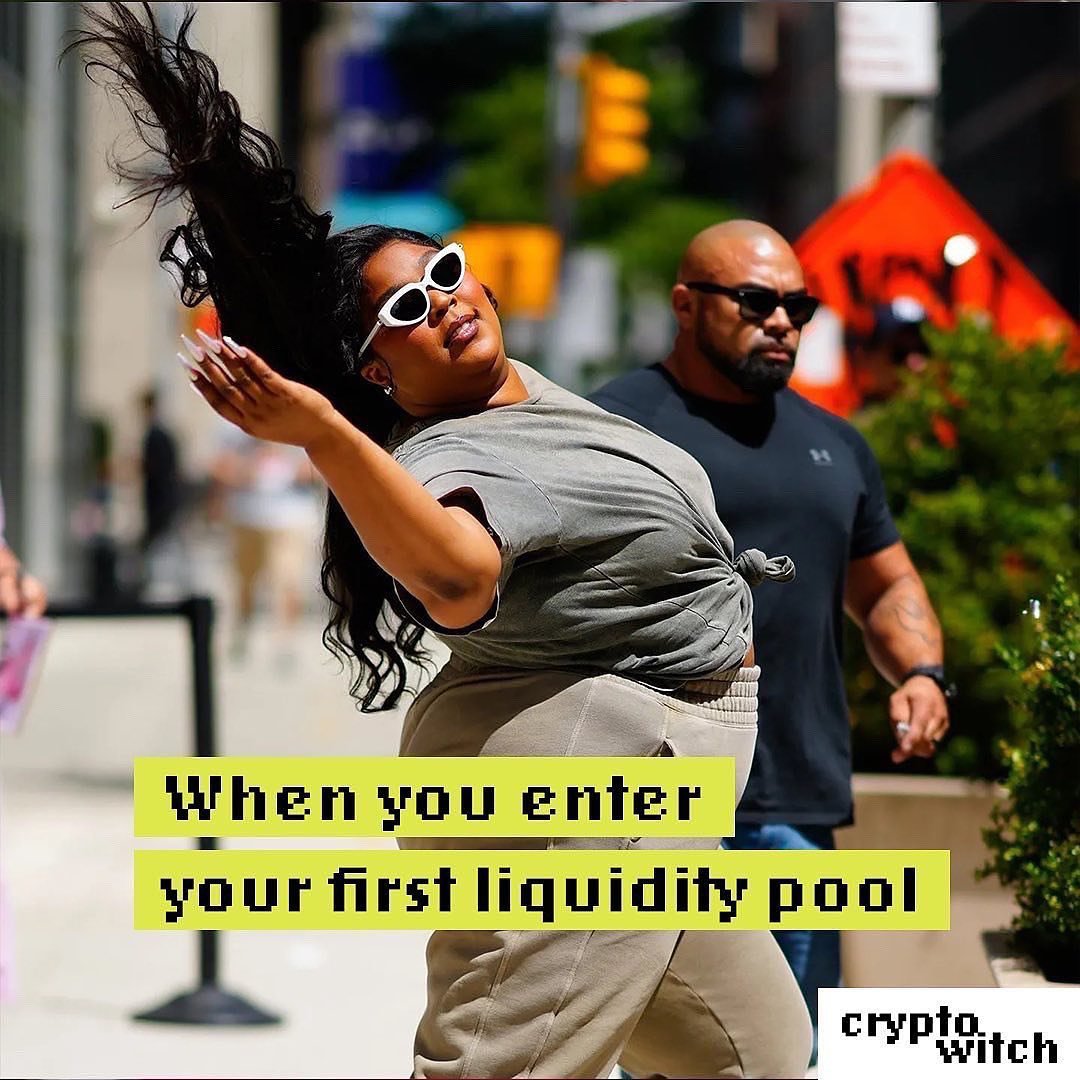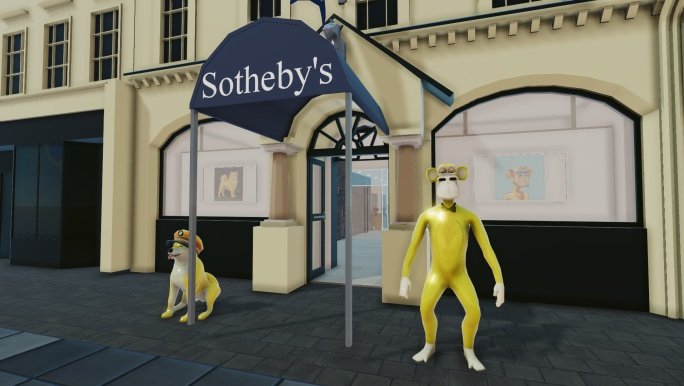web3 IRL — Club Card Holder Challenge #1
Club Card holders, consider us your web3 study buddy.
Welcome to web3 IRL — the content sidekick of our first Crypto Witch Club Challenge! (She’s here!) We’re demystifying our favorite web3 case studies of how blockchain tech is being used IRL — and you wouldn’t believe some of the ways it’s already being implemented. Give this a read and then head over to our ✨Open Challenges community room✨ to begin the quiz.
How it Works:
1. Club Card holders who complete the quiz will receive a score at the end + more related links to learn. (Your score isn’t public, but you’re welcome to share on social media!)
2. At the end of the quiz, you’ll have the opportunity to provide your wallet address for the sticker drop. Make sure you provide the same wallet address that holds your Club Card or the sticker drop will not be received!
3. The 1st Club Card sticker will drop December 23rd. It’s a participation sticker — so everyone who completes the challenge and submits their wallets will receive the drop. After 5pm ET on that December 22nd, the sticker can no longer be claimed (and you’ll have to wait for Challenge 2 to begin claiming stickers) so make sure to complete in time
4. A glossary of all the stickers you can earn will be added to our NFT page as each sticker is released. Special stickers will be sporadically released to select Club Card Holders
Crypto Witch Club is an inclusive, equitable space for all to learn about blockchain technology, cryptocurrencies, tokens, DAOs, NFT’s, the Metaverse, and more. For those who don’t hold the Club Card but are interested in participating, join our community to meet Club Card members or follow us on Instagram and Twitter. Learn more about The Crypto Witch Club Card, rewards, perks, voting rights and more here.
What is blockchain and how does it relate to cryptocurrency and NFT?
Here’s how blockchain plays a part in web3
We love digital ownership … and digital ownership is made possible through of blockchain technology! To understand digital ownership, you must understand what blockchain is, and how it relates to cryptocurrencies and NFTs.
What’s blockchain?
A blockchain is a growing list of records (known as blocks). Each block contains information and together forms a chain that cannot be altered or corrupted. There is not just one blockchain, there are many networks, and each operates slightly differently.
What does blockchain technology do?
The blockchain acts as a digital ledger — a system of recording information that needs no centralized source (such as a bank). This reduces a lot of ‘friction’ that we see in the world that stems through centralized sources.
How does blockchain relate to cryptocurrencies and NFTs?
Imagine blockchain as train tracks. These train tracks are the foundation on which and NFTs and cryptocurrencies (the trains) run on. The blockchain provides security (sometimes through cryptography) and infrastructure that keeps the trains — NFTs and cryptocurrency — safe, without needing to be governed by a central figure or bank.
Centralization vs Decentralization
You may have heard the terms CeFi and DeFi thrown around but what’s the difference between the two? Let’s break it down!
CeFi is short for centralized finance, and DeFi short for decentralized finance. But centralization vs decentralization isn’t only related to finance! It encompasses a lot more than that.
Centralization Definition
/sentrələˈzāSH(ə)n/ noun
The concentration of control of an activity or organization under a single authority.
Decentralization Definition
/ˌdēˌsentrələˈzāSH(ə)n/ noun
The transfer of control of an activity or organization to several local offices or authorities rather than one single one.
What are the benefits of Decentralization?
Trustless + transparent
Increased scalability
Efficient decision making
Cost benefit (removing ‘middlemen’)
Giving control back to users
How can we see the find the difference between a centralized system and a decentralized system?
Example 1: A centralized cryptocurrency exchanges vs decentralized cryptocurrency exchange
A centralized cryptocurrency exchange allows users to trade cryptocurrency, exchange FIAT for crypto, exchange crypto for FIAT, and stake / lend. They often serve as custodians for those who leave your crypto on the exchange (don’t do this, witches — not your keys, not your crypto)! Unlike a decentralized exchange, they are controlled by one entity.
A decentralized cryptocurrency exchange allows users to trade cryptocurrency, and stake, lend, and join liquidity pools. Unlike a centralized exchange, a decentralized exchange uses smart contracts (code) to automate trades and transactions. A decentralized exchange also does not have a single entity in charge, and are run by DAOs. Decentralized exchanges have lower fees, increased transparency, and earnings are distributed to liquidity providers through a smart contract.
Example 2: Traditional private company vs DAO
A traditional private company has a typical triangle structure where a lot of the power and decision making (if not all) sits at the tippity-top with C-level leaders, owners, and executives. There’s often information that is hidden, not publicly available, or can be manipulated.
A DAO (decentralized autonomous organization) is transparent, democratized, and global collectivepowered by blockchain — which allows the community / team / company to run without the need for a centralized source. Members can vote, see funds, and otherwise participate in ways they may not be able to at a centralized company.
BLOCKCHAIN IRL
Let’s demystify together how blockchain is being used now and how it can be used in the future!
1. Blockchain IRL — online and social media
What’s the difference between web2 — like Meta, Google, and Twitter — and web3? Ownership, rewards, and deciding how your data is used
Meet Brave: A web3 browser — like Brave Browser — is more reflective of decentralization. Although Brave Browser is NOT a decentralized company, it is web3 focused and aligns with the decentralized ethos. Brave Browser allows users to choose to allow ads and trackers. What do you get in return for allowing this? You’re paid for your attention — in BAT — Brave’s native token. You can use these earnings to transfer to your country’s currency and cash out, hold onto it as an investmen,t or tip content creators your love.
Meet Lens: A decentralized social network that has a low carbon footprint — think of Lens as an open-source and composable social graph where users have full rights to their content — versus current centralized platforms now like Instagram and Twitter. Imagine if you could take all your content and data off one channel and seamlessly move to another whenever you wanted? That’s ownership (and that’s web3, baby)!
2. Blockchain IRL — Real Estate
web3 isn’t new to real estate — both virtual and IRL
Meet Cabin: A DAO that offers co-living properties for creators and remote workers, Cabin allows members — referred to as residents — to lease month-to-month, travel between properties within a network of neighborhoods sharing a similar culture, and surround themselves with a community of creators.
Meet Milo: Are crypto mortgages a thing? Yep, they’re happening! Milo considers your crypto wealth when you apply for a mortgage — versus a traditional mortgage where you would need to convert your crypto to fiat for it to be considered. With Milo, you can use your crypto as collateral to borrow up to 100% of the purchase price. We’re excited to see how this market expands and what options become available as crypto adoption grows.
Meet Sotheby’s Metaverse: In 2021, Art auction house Sotheby’s created an immersive destination for collectors featuring curated selections of NFTs, hosted on their custom-built Metaverse platform — ‘Sotheby’s Metaverse’. Sotheby’s build saw record breaking NFT sales from their Metaverse integration. You can explore their current NFT collections here.
Meet Decentraland: Brands, collectives, and individuals are purchasing virtual real estate and hosting events and experiences from concerts, (like Paris Hilton and Deadmau5) to shopping and ecommerce (Sothebys) to a digital meeting place for work and collaboration. Decentraland is just one Metaverse platform you can purchase parcels of land at varying sizes to claim your space in web3. (You can also build on land and then sell it.) Explore it for yourself here.
3. Blockchain IRL — Publishing
Own your content
Meet Mirror: A web3 decentralized publishing platform for writers — we see Mirror as the Medium of web3. Mirror is run by a a DAO and serves as a space for users to publish content, mint their articles (turn them into NFTs), and receive + split tips with contributors. Sign up with your wallet to explore and find authors.
4. Blockchain IRL —Artists and creators
Release music, pay collaborators, receive royalties
For musical artists, NFTs provide full ownership and control over their work, in addition to the opportunity to set ongoing royalty rates through smart contracts. Read The Web3 Guide to Getting Into the Music Industry by Megan DeMatteo to get a better idea of how artists are taking advantage of web3 with their music.
Grimes, Snoop Dog, and Kings of Leon have all create exclusive content and fan rewards through music NFTs. British composer and recording artist, Imogen Heap, was an early investor of Ethereum (ETH) and one of the first musical artists to advocate for creators to utilize blockchain tech and NFTs. She has so far released six audio visual NFTs that offer a set of live recordings. Throughout sales, Imogen Heap as donated to causes that work to offset any carbon footprint that could occur during the transaction.
5. Blockchain IRL — Sustainability and supply chain
carbon-negative blockchains, counterfeit protection, and supply chain management tokens are changing the game
Blockchain does NOT always equal bad for the environment. While proof-of-work cryptocurrencies like Bitcoin can utilize a great deal of energy to be mined — others require minimal energy usage. A transaction on Solana’s blockchain uses less energy than 2 google searches, and blockchain Celo and Algorand are carbon negative, while others like Polygon are carbon neutral.
Tracking Carbon Credits: Onchain carbon credits ca create transparency and easy onboarding into the carbon credit market. DAOs like KlimaDAO — built on the carbon-neutral Polygon blockchain — are working with brands and partners now to do just that and offset emissions.
Supply Chain Management: VeChain (VET) is a blockchain + coin designed to create efficiency within + optimize enterprise supply chain solutions. It operates as a proof-of-authority coin — authority masternode operators receive additional rewards. These rewards are distributed in the form of VeThor (VTHO) — the ‘gas’ that powers the VeChain ecosystem. VeChain is also being used a counterfeit protection for luxury goods, and has partnered with LVMH.
Recycling: Plastic Bank is turning plastic into currency by setting up collection centers in third world countries, where people can deposit used plastic in exchange for currency, services like phone charging, or items like cooking fuel. They use a blockchain-secured platform to enable traceable collection, secures income and verifies reporting from the initial plastic collection in each community.
Overfishing: Blockchain tech can help improve traceability to help stop illegal and unsustainable fishing and hunting practices. Fishcoin is one blockchain-based seafood traceability project that tracks data throughout the full supply chain cycle to ensure accuracy, quality, and safety.
6. Blockchain IRL — Consumer Goods
Keeping brands collaborative and creative
Get a taste of OffLimits: this vegan, gluten-free, and “offensively good” cereal brand is breaking the mold in web3. OffLimits launched a capsule of generative NFTs featuring artist interpretations of the cereal’s mascots — Das, Flex, Spark, and Zombie. Purchasing a part of the 2,500-piece NFT collection grants holders access to OffLimit’s gated community channel on Discord — where holders can collaboratively design a real-life cereal box to be produced and delivered.
Ok Club Card holders! Not featured in this recap but important to know — a base understanding of how web2 brands are using web3 initiatives for brand loyalty + rewards programs. (Think Starbucks, Reddit …) Now that you have a head start, head to our Open Challenges room and take the quiz to receive your sticker!







